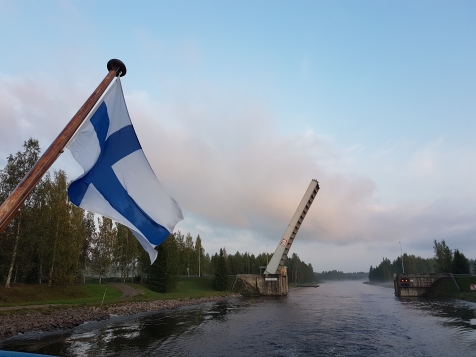

Waterways the most advantageous way of transport regarding the socio-economic impact
The Finnish Waterways fulfilled a survey on Cost Benefit Analysis at the Saimaa Lake area in co-operation with the Finnish Transport Infrastructure Agency.
The Finnish Waterways fulfilled a survey on Cost Benefit Analysis at the Saimaa Lake area in co-operation with the Finnish Transport Infrastructure Agency (earlier Finnish Transport Agency).
The work was conducted by a Swedish traffic analysis company M4Traffic AB, commissioned by the Finnish Waterways within the EMMA project and executed in co-operation with the Finnish Transport Infrastructure Agency. This was the first public study regarding the social costs (emissions, accident costs, infrastructure maintenance costs etc.) on the different transport modes in Finland.
The Saimaa Lake and Canal area are the only inland waterways in Finland having cargo transportation. This inland waterway connection to the sea is vital for the area. There are plans for significant improvements at the Saimaa Lake and Canal area, which need noteworthy investments from the state and regions as well as from the shipowners.
The Cost Benefit Analysis at the Saimaa Lake Area
Different transport alternatives for pulp transport from Joensuu, Finland to Dusseldorf, Germany were studied and compared to understand which of the transport alternatives is preferable from a socio-economic point of view.
The calculations were based on actual transport volumes of pulp and information was received from the Finnish Transport Infrastructure Agency and on guidelines from the Swedish Transport Administration. The time span was until 2062, since the current agreement between Finland and Russia on the Saimaa Canal rent is in force until then.
This socio-economic analysis covered the costs related to the different transport scenarios that the society values and can put a price on. All alternatives were calculated one-way from Joensuu to Düsseldorf and on a condition of a fully loaded vessel, truck or train for a yearly volume of 200 000 mt.
Six different transport options and one sub-alternative were included in the analysis and compared to each other:
- Alternative 1 Direct vessel – General cargo ship 2 500 dwt and 3 200 dwt
- Alternative 2a Truck (Carelian route) - RoRo ship 9 500 dwt -Truck
- Alternative 2b Truck (Carelian route) - Passanger ferry ship -Truck
- Alternative 3 Truck (Carelian route) - General cargo ship 4 500 dwt -Truck
- Alternative 4 Train (Carelian route) - General cargo ship 4 500 dwt -Train
- Alternative 5 Truck (Savo route) - General cargo ship 4 500 dwt -Truck
- Alternative 6 Train (Savo route) - General cargo ship 4 500 dwt -Train
The Results of the Socio-Economic Calculation
The results of the socio-economic calculation show that the direct vessel transport from Joensuu to Dusseldorf is the most advantageous. This applies both to the total costs as well as the costs that affect society in terms of wear and tear, accident costs and emissions. The fact that the total socio-economic costs are lowest for this option indicates that it is beneficial for the society to try to influence the carriers to choose inland waterways as a mode of transport.

Heli Koukkula-Teixeira, Executive Director, Finnish Waterways
E-mail: heli.koukkula@vesitiet.org
Tel: +358 50 5903182